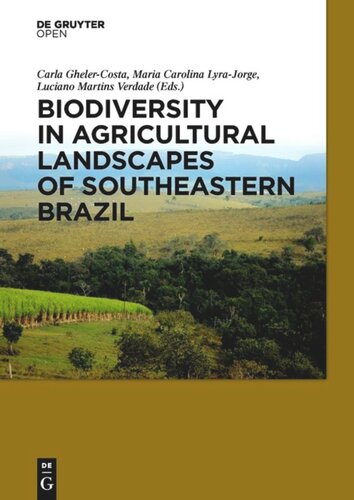

Most ebook files are in PDF format, so you can easily read them using various software such as Foxit Reader or directly on the Google Chrome browser.
Some ebook files are released by publishers in other formats such as .awz, .mobi, .epub, .fb2, etc. You may need to install specific software to read these formats on mobile/PC, such as Calibre.
Please read the tutorial at this link: https://ebookbell.com/faq
We offer FREE conversion to the popular formats you request; however, this may take some time. Therefore, right after payment, please email us, and we will try to provide the service as quickly as possible.
For some exceptional file formats or broken links (if any), please refrain from opening any disputes. Instead, email us first, and we will try to assist within a maximum of 6 hours.
EbookBell Team

0.0
0 reviewsThe state of São Paulo, Brazil, is one of the most densely populated and developed areas in South America. Such development is evident both in terms of industrialization and urbanization, as well as in agriculture, which is heavily based on sugar cane, Eucalyptus plantations and livestock. This intense land use has resulted in great alteration of the original land cover and fragmentation of natural ecosystems. For these reasons, it is almost a paradox that jaguar, a species that requires large areas of pristine forest to exist, is still found in some parts of the state of São Paulo. It is possible that wild animals could leave in coexistence with intense land use, or is it the case that such rare encounters with large wild animals in São Paulo will disappear in the near future?
All ecologists are aware of the problems of habitat changes caused by humans, but it was not until recent years that researchers started to consider that the land used for production could also serve as an important habitat for many different kinds of wild species. This book is about this new approach to conservation. It also highlights the important role that sciences could and should have in this discussion in order to better understand the problems and propose possible solutions.
Biodiversity, Agroecosystems, Brazil